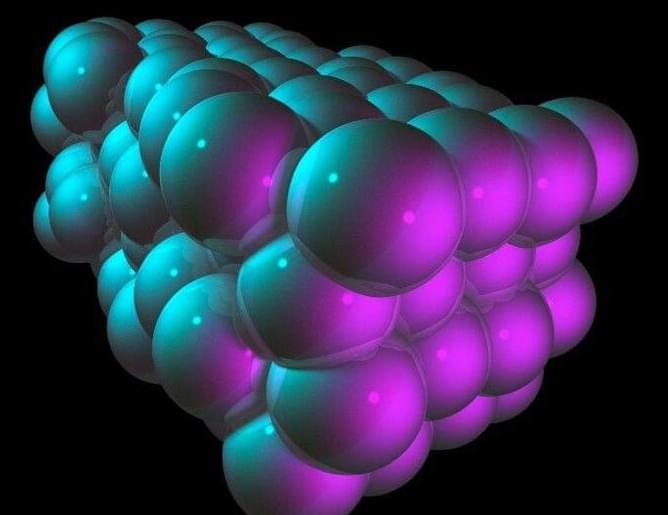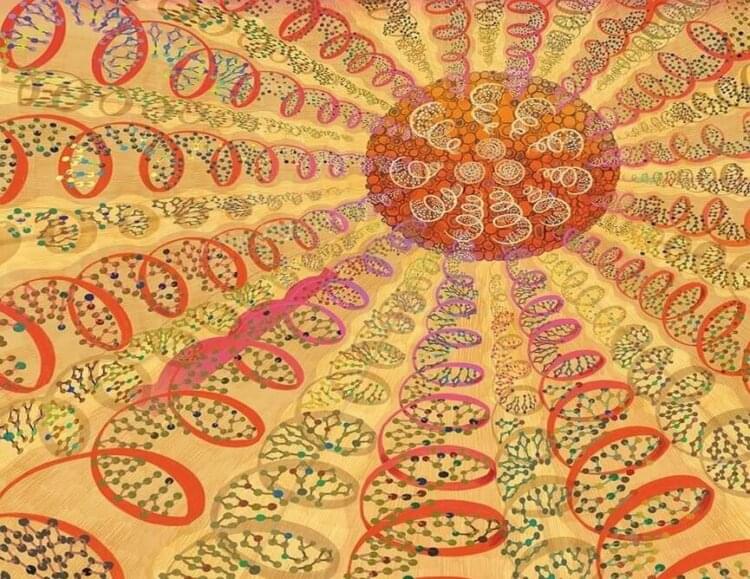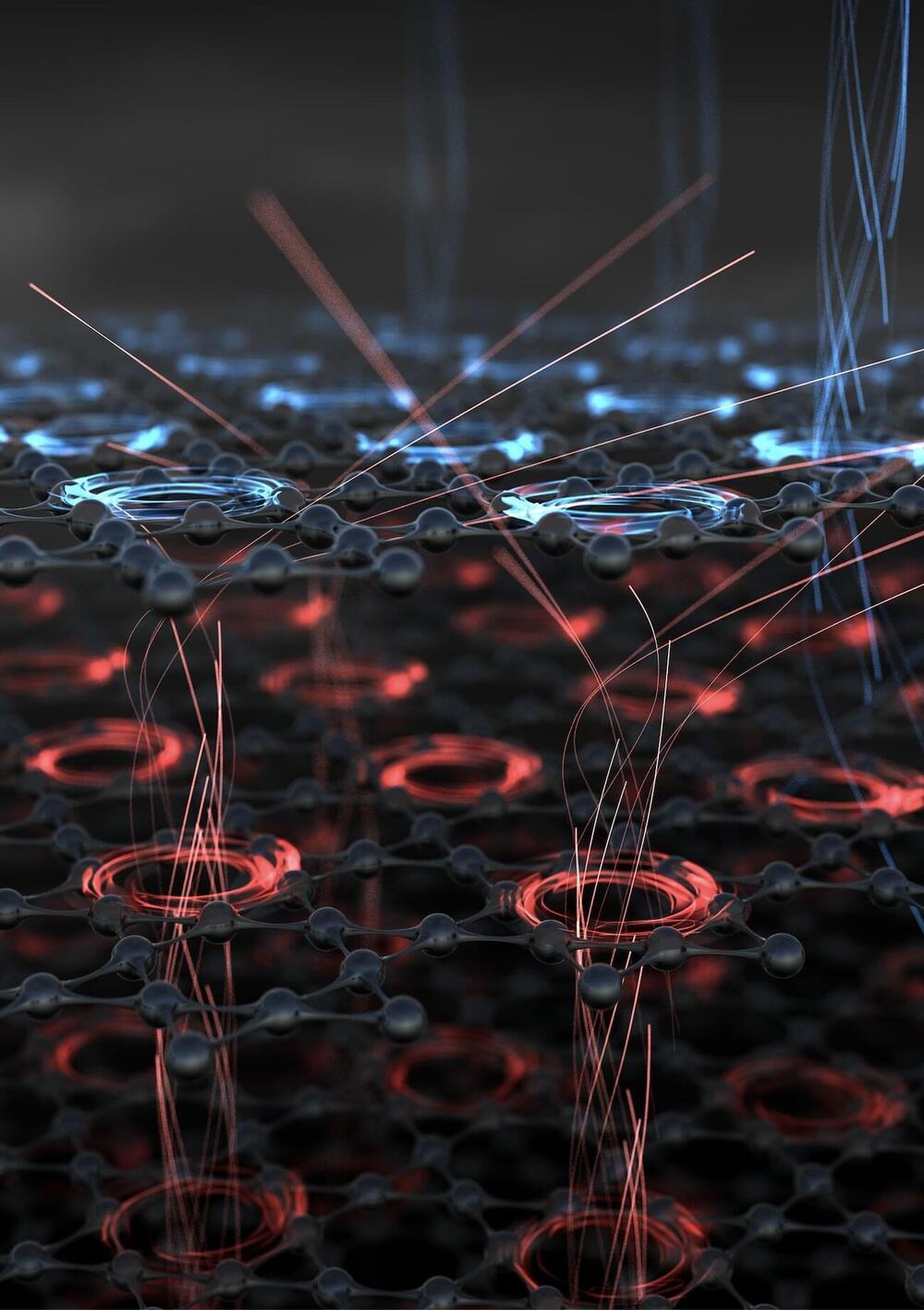Plutonium is the 94th element in the periodic table and one of the most dangerous elements on Earth. Here we explore Plutonium in more detail.



Immunizing bees against pesticides.
‘We wanted to develop a strategy to detoxify managed pollinators and found we can do it by incorporating it into their food, senior author Minglin Ma, a biomaterials engineer at Cornell University told Chemistry World.
“Managed bee colonies are constantly in need of being replenished due to losses. This relieves the stress for beekeepers to meet the ever-increasing demand for pollination,” James Webb, also a co-author of the study, told Salon by email.
The pollen-like particle: The team created a pollen-sized microparticle with an enzyme designed to detoxify organophosphate pesticides. Usually, the bee’s crop (stomach) would break down the enzymes. But the researchers created a protective shell that allows it to pass through the crop unscathed.

Researchers from the Universities of Cambridge and Cape Town may have found a solution to the mystery of how phosphorus came to be an essential component of life on Earth by recreating prehistoric seawater containing the element in a laboratory.
Their findings, which were published in the journal Nature Communications.
Nature Communications is a peer-reviewed, open access, multidisciplinary, scientific journal published by Nature Research. It covers the natural sciences, including physics, biology, chemistry, medicine, and earth sciences. It began publishing in 2010 and has editorial offices in London, Berlin, New York City, and Shanghai.
*Intelligence Beyond the Brain: morphogenesis as an example of the scaling of basal cognition*
*Description:*
Each of us takes the remarkable journey from physics to mind: we start life as a quiescent oocyte (collection of chemical reactions) and slowly change and acquire an advanced, centralized mind. How does unified complex cognition emerge from the collective intelligence of cells? In this talk, I will use morphogenesis to illustrate how evolution scales cognition across problem spaces. Embryos and regenerating organs produce very complex, robust anatomical structures and stop growth and remodeling when those structures are complete. One of the most remarkable things about morphogenesis is that it is not simply a feed-forward emergent process, but one that has massive plasticity: even when disrupted by manipulations such as damage or changing the sizes of cells, the system often manages to achieve its morphogenetic goal. How do cell collectives know what to build and when to stop? Constructing and repairing anatomies in novel circumstances is a remarkable example of the collective intelligence of a biological swarm. I propose that a multi-scale competency architecture is how evolution exploits physics to achieve robust machines that solve novel problems. I will describe what is known about developmental bioelectricity — a precursor to neurobiology which is used for cognitive binding in biological collectives, that scales their intelligence and the size of the goals they can pursue. I will also discuss the cognitive light cone model, and conclude with examples of synthetic living machines — a new biorobotics platform that uses some of these ideas to build novel primitive intelligences. I will end by speculating about ethics, engineering, and life in a future that integrates deeply across biological and synthetic agents.

A team of researchers at Northwestern University has devised a new platform for gene editing that could inform the future application of a near-limitless library of CRISPR-based therapeutics.
Using chemical design and synthesis, the team brought together the Nobel-prize winning technology with therapeutic technology born in their own lab to overcome a critical limitation of CRISPR. Specifically, the groundbreaking work provides a system to deliver the cargo required for generating the gene editing machine known as CRISPR-Cas9. The team developed a way to transform the Cas-9 protein into a spherical nucleic acid (SNA) and load it with critical components as required to access a broad range of tissue and cell types, as well as the intracellular compartments required for gene editing.

(Use Promo Code PRODANDNEURO For 15-percent Off Your First Purchase)
This is not a knock on caffeine by any means. There’s a reason people have been consuming it for thousands of years. It works by blocking the neurotransmitters in the brain that produce drowsiness. This keeps your neurons firing at full speed, which makes you feel awake. And studies show it is very effective at boosting mood. But what if you could do more for your brain than simply tricking it into being awake? What if you could give your brain nutrients that help it work better all the time? Well, with a well-designed nootropics supplement, you can.
Nootropics are often marketed as “smart drugs,” which gives the impression that they’re going to boost your IQ and turn you into a rocket scientist or brain surgeon. But that is not actually the case. Nootropics are simply chemical compounds that help create the biological conditions necessary for optimal brain function. They include things like amino acids, vitamins, minerals, nutrients, and even stimulants such as caffeine. Some of these compounds serve as fuel for cognition. Others modulate various processes involved in neurotransmission.

An international research team led by the Department of Microstructured Quantum Matter at the MPSD reports the first observation of switchable chiral transport in a structurally achiral crystal, the Kagome superconductor CsV3Sb5. Their work has been published in Nature.
Whether or not an object is indistinguishable from its mirror image has important consequences for its physical behavior. Say you watch a basketball player in a mirror. The ball, the player and their surroundings are, at first glance, just the same in the mirror as in real life. But if observed closely, some details are different. The ball in the player’s right hand now appears in their left hand in the mirror. While the mirror image still shows the same hand, it has clearly changed from a left to a right hand or vice versa. Many other physical objects also have mirror images that differ in a key aspect, just like hands, which is why scientists call them handed or chiral (from Greek χϵρι = hand). Others, like the ball, cannot be distinguished from their mirror image, which makes them achiral.
Chirality is one of the most fundamental geometric properties and plays a special role in biology, chemistry and physics. It can cause surprising effects: One version of the carvone molecule, for example, produces a spearmint smell but its chiral—mirrored—equivalent smells of caraway.
Scientists have successfully increased the lifespan of animals and there are first studies which describe how we might reverse aging. So how could we one day rever aging?
🔬 Subscribe for more awesome biomedical research: https://bit.ly/2SRMqhC
📸 IG: instagram.com/clemens.steinek.
🔬Twitter: https://twitter.com/CSteinek.
In the 70s, scientists observed that cells only grow for a limited amount of days in the laboratory (Hayflick limit). Over the years, so-called hallmarks of aging have been uncovered. These hallmarks of aging govern how our cells age and we could try to slow dem down to “reverse aging”.
The first hallmark of aging is mutation. We can acquire mutations by being exposed to UV radiation or certain chemicals or through cell division. Cell divsion also leads to a second hallmark of aging (telomere attrition). Furthermore, our mitochondria start to work less as quality checks do not work properly anymore.
The hallmarks of aging are tightly linked to epigenetics. Epigenetics means that we have mechanisms (DNA methylation, histone modifications) which regulate the activity of genes. Epigenetics governs the development of embryonic stem cells into cells of our body but also impact aging. The loss of mitochondria for example is linked to dysfunctional epigenetic layers. As we age, at least three epigenetic modifications namely H4K16 acetylation, H3K4 trimethylation, or H4K20 trimethylation acumulate. The thing is that epigenetics is reversible… so can we also reverse aging?
Diets have been shown to slow down (and reverse aging to a small degree). Cells also show less damages in their DNA and we find higher levels of proteins which are found in “young cells. The activity of mitochondria is also increased if we undergo caloric restriction. Diets also impact the production of sirtuins which increase the lifespan and reverse aging. Different compounts (such as NMN and remodelin) have been shown to improve the epigenetic landscape which might have an effect on reversing aging. Exercise also might help to reverse aging as it helps to increase the activity of mitochondria. Meditation and having less stress also helps to increase the lengths of telomeres which might help to reverse aging. All in all studies suggests that some hallmarks of aging can be reversed so lets see where that goes!
0:00–0:46 Intro.
0:46–3:53 Hallmarks of Aging.
3:53–6:38 Epigenetics Controls Genes.
6:38–8:45 Reversing Aging: what is known.
8:45–11:25 Reversing Aging through Diets & Sports.
11:25–12:13 My Opinion.
References:

From raspberry notes to rum and nail polish ones. Some call it a ‘space party,’ while others say ‘it stinks.’
Doctoral researcher in Astrobiology and professional perfumer, Marina Barcenilla, creates the scents of space based on astrochemistry and reports by astronauts.
Interesting Engineering (IE) report on the range of smells available including which represent the entire journey around Earth’s orbit to the center of the Milky Way. By tapping into the intimate relationship between olfaction (the sense of smell) and memory, the project aims to break communication barriers between science and the public.
Angel_nt/ iStock.
Researchers can also make assumptions about how things might smell in space using various chemicals and elements found on Earth as well as elsewhere in the galaxy.
